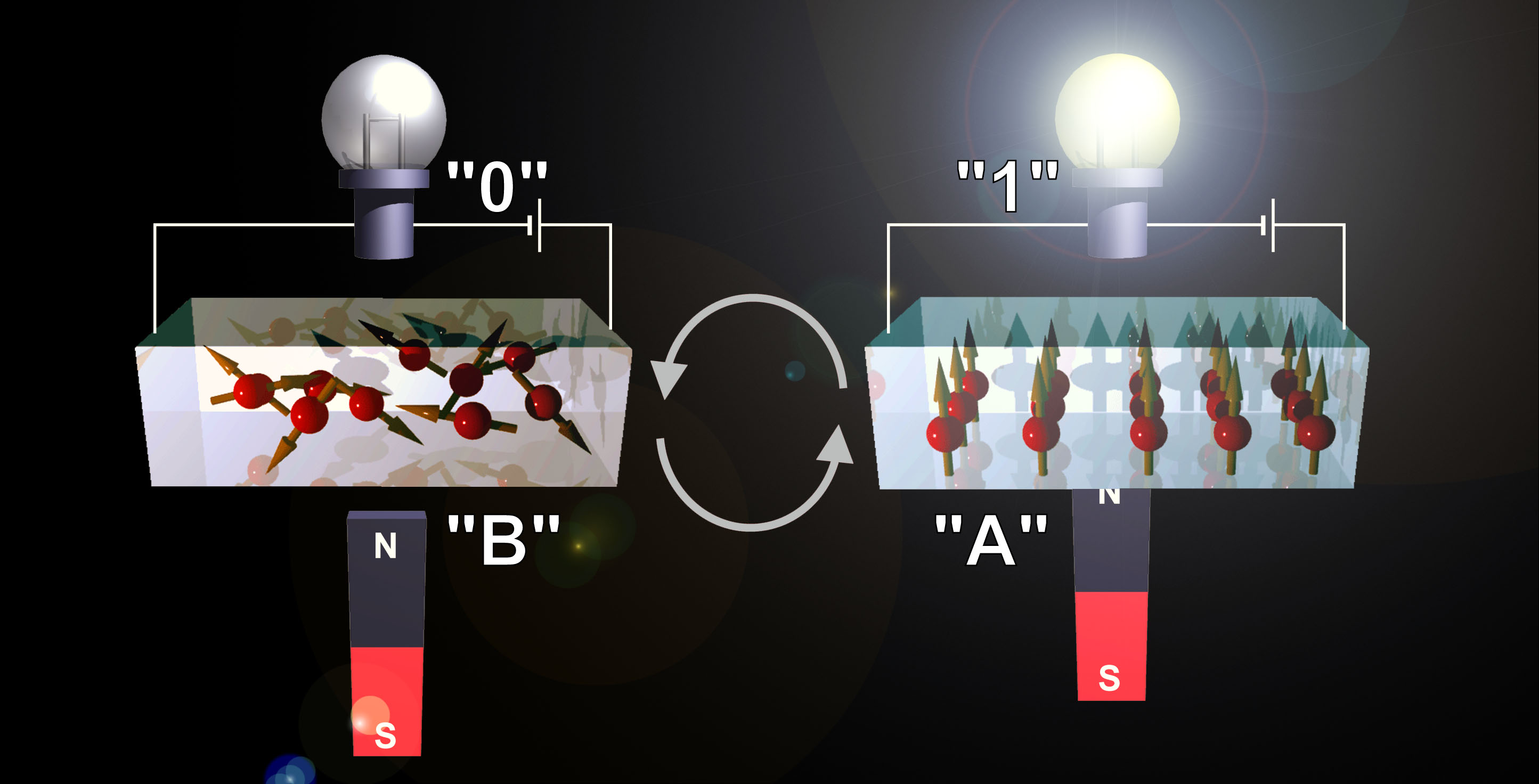An insulator changes into conducting magnet -New way toward high capacity memory device-
[Advanced Electronic Materials 2016 DOI:10.1002/aelm.201600044]

Using the flexible value of the valence state of transition-metal ions in transition-metal oxides, the device can be switched from an insulating/nonmagnet (paramagnetic or antiferromagnetic) state to a metallic/magnet (ferromagnetic or ferrimagnetic) state simultaneously by electrochemical oxidation/reduction (redox) reaction at room temperature in air. Such a device would be an indispensable building block for multiplex writing/reading of electric/magnetic signals.
We have demonstrated an RT-operable electromagnetic device based on a transition-metal oxide, SrCoOx, using a newly developed leakage-free electrolyte incorporated in an amorphous NaTaO3 nanopillar array film. The resultant device showed excellent characteristics: reversible AFM-insulator/FM-metal (Tc = 275 K) switching of the SrCoOx layer occurred electrically under a small DC voltage (±3 V) within a very short time (2–3 s) at RT in air, i.e., the device is operable with two alkaline batteries (3 V) within the second time scale. The present device does not present liquid leakage problems, and the leakage-free electrolyte provides a novel design concept for transition-metal-oxide-based practical electromagnetic devices, whose electrical conductance and magnetism can be simultaneously switched. Such devices are expected to be indispensable building blocks for multiplex writing/reading of electric/magnetic signals. Further, the present approach may aid in the development of many new devices based on transition-metal oxides.

